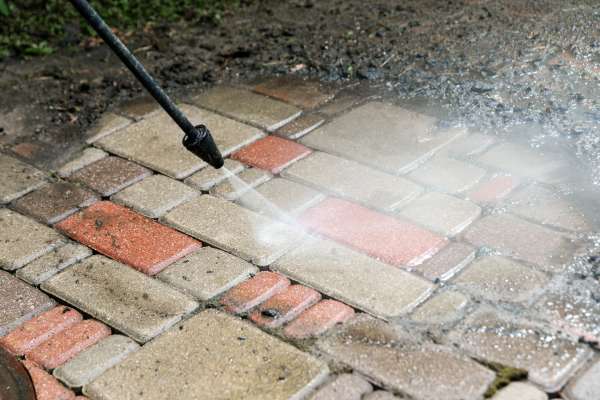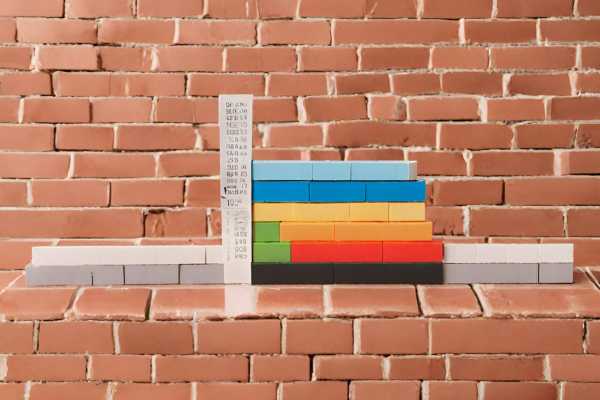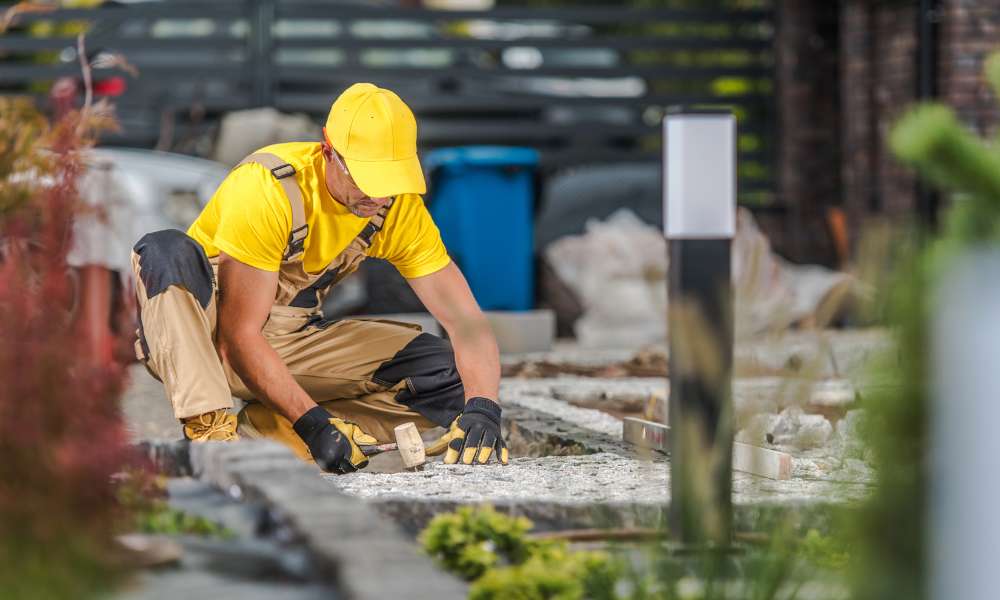In the heart of every well-maintained garden lies the understated elegance of landscaping bricks. These bricks not only define the aesthetic of your outdoor space but also serve as a testament to your home’s overall charm. However, with time, these bricks can lose their luster, falling prey to dirt, stains, and organic growth. In this guide on how to clean landscaping bricks we delve into the art and science of restoring the beauty of your brickwork. From identifying different types of stains to mastering the techniques of effective cleaning, we’ll equip you with all the knowledge needed to rejuvenate your landscaping stones. Whether you’re tackling a small garden path or a grand patio, our comprehensive guide promises to transform your brick cleaning endeavor into an easy, efficient, and satisfying task. Let’s embark on this journey to reclaim the splendor of your outdoor haven, one brick at a time.
What Is The Best Cleaning Solution For Landscaping Bricks?
The best cleaning solution for landscaping bricks is a mixture of water and mild dish soap. This solution is gentle enough to not damage the bricks, but effective in removing dirt, grime, and stains. Simply mix a small amount of dish soap with water in a bucket, then use a scrub brush or sponge to apply the solution to the stones. After scrubbing, rinse the bricks thoroughly with clean water to remove any soap residue.
Can I Use A Pressure Washer To Clean Landscaping Bricks?
Yes, you can use a pressure washer to clean landscaping bricks. Pressure washers are an effective way to remove dirt, grime, and even moss from brick surfaces. However, it’s important to use the right pressure setting and nozzle attachment to avoid damaging the bricks. Start with a lower pressure setting and test it on a small area before proceeding to clean the entire surface.
How Often Should I Clean My Landscaping Bricks?
It is recommended to clean your landscaping bricks at least once a year to maintain their appearance and prevent the buildup of dirt, moss, and algae. However, if you notice excessive grime or staining, it may be necessary to clean them more frequently. Additionally, after heavy rainfall or during periods of high humidity, it’s a good idea to inspect the bricks for any signs of mold or mildew and clean them as needed.
External Brick Cleaning

External brick cleaning is essential for maintaining the aesthetic and structural integrity of your landscaping. It involves removing dirt, grime, and biological growth that can accumulate over time. Start by choosing a dry, overcast day for cleaning to prevent the cleaning solution from evaporating too quickly.
Preventing Stripe
Preventing stripes on landscaping stones can be a challenging task, but with the right approach, it’s absolutely achievable. One effective method is to regularly clean and maintain the bricks using a pressure washer. This not only removes dirt and debris but also helps prevent the formation of stripe by keeping the surface clean and free from organic materials.
Test Brick Consumption Rate

To effectively clean landscaping bricks, utilizing mild detergents or specialized cleaners specifically designed for masonry surfaces can make a significant difference. It’s important to avoid harsh chemicals that may cause discoloration or deterioration over time. Additionally, regular maintenance such as pressure washing and removing weeds between the bricks can prevent deterioration and ultimately decrease the overall consumption rate.
Flush Thoroughly
To effectively clean landscaping rocks, it is crucial to flush them thoroughly with water. This step is often overlooked, but it is essential for achieving a pristine appearance in your outdoor space. By flushing the rocks thoroughly, you can remove any dirt, debris, or lingering residue that may have accumulated over time.
Identifying The Type Of Dirt And Stains
Identifying the type of dirt and stains on your landscaping stones is essential for choosing the most effective cleaning method. Common types of dirt typically found on outdoor surfaces include mud, dust, pollen, and organic debris such as leaves and grass clippings. By closely examining the stains, you can determine whether they are caused by rust, oil, algae or mold, or other environmental factors.
Conflict Tough Stains
Tackling tough stains on landscaping stones can be a daunting task, but with the right techniques, it’s not impossible to restore those stones to their former glory. One effective method is using a pressure washer with a high PSI setting to blast away deep-seated dirt and grime. Additionally, the use of specialized brick cleaners can effectively target and eliminate specific types of stains such as oil or rust. It’s important to note that scrubbing the surface with a stiff brush can also help dislodge stubborn debris before applying any cleaning solution.
Preventing Moss And Algae Growth
To prevent moss and algae, ensure your landscaping has good drainage and sunlight exposure. Regularly remove leaves and debris that can trap moisture. For persistent issues, consider using a fungicide or a solution of bleach and water, but be cautious of surrounding plant life.
Drying Your Landscaping Bricks
Drying your landscaping stones after cleaning is crucial to ensure they retain their beauty and longevity. While many homeowners focus on the cleaning process, overlooking proper drying methods can lead to unsightly water stains and even mold growth. To ensure a thorough drying process, consider using a leaf blower or a high-powered fan to eliminate any residual moisture trapped in the crevices of the stones. Additionally, placing the bricks in direct sunlight can expedite the drying process and help prevent any lingering moisture issues.
Assessing The Fresh Bundle Bricks
Assessing the Fresh Bundle Bricks requires a keen eye for quality and durability. When selecting landscaping stones, it’s important to consider not only their appearance but also their maintenance requirements. The choice of materials plays a significant role in long-term upkeep, as some varieties may require more frequent cleaning and sealing than others. This is especially true for outdoor stones, which are exposed to the elements and can accumulate dirt, moss, or algae over time.
Cleaning The Necessary Tools And Materials
Finally, cleaning your tools and materials after the job is crucial for their longevity. Rinse brushes, buckets, and other equipment with clean water. Store chemicals and cleaners according to their instructions. Proper maintenance of your tools ensures they are ready for future use.
Conclusion
Cleaning landscaping bricks can be a simple and effective way to enhance the beauty of your outdoor space. By following the steps outlined in this article, you can easily remove dirt, grime, and stains from your bricks, leaving them looking fresh and revitalized. Regular maintenance and proper cleaning techniques will help extend the life of your landscaping bricks and maintain their appearance for years to come. With the right tools and a little elbow grease, you can transform your brickwork into a stunning focal point of your landscape. So, take the time to give your landscaping bricks the care they deserve and enjoy a clean, beautiful outdoor space that you can be proud of.
